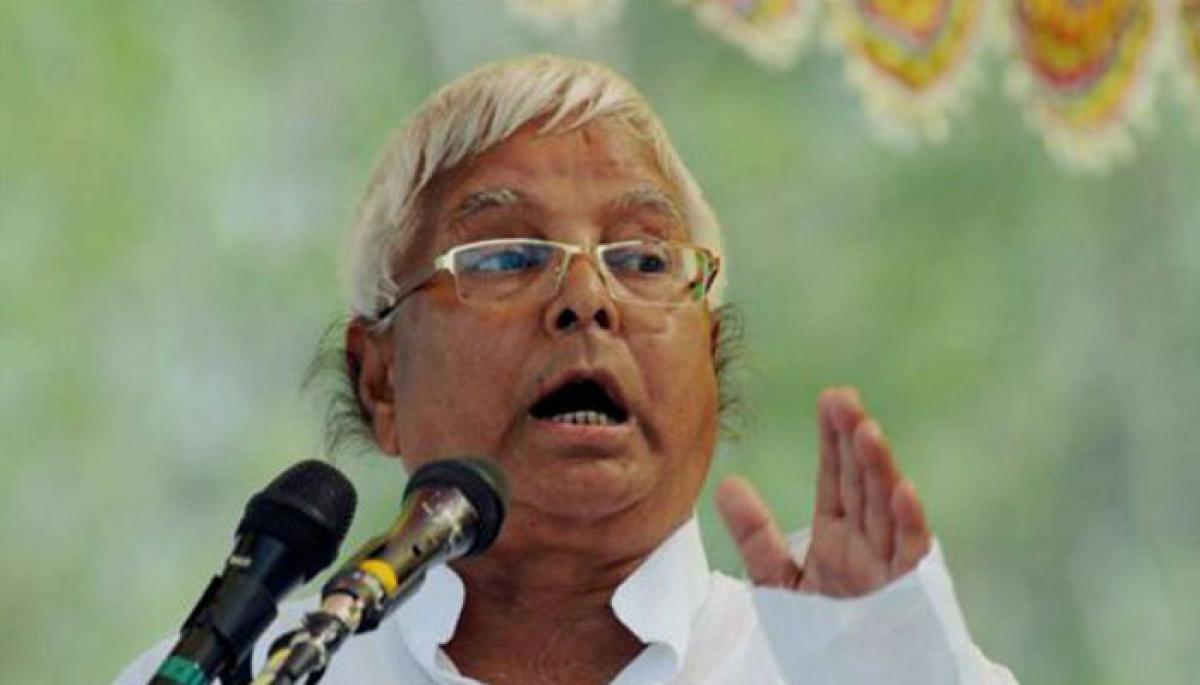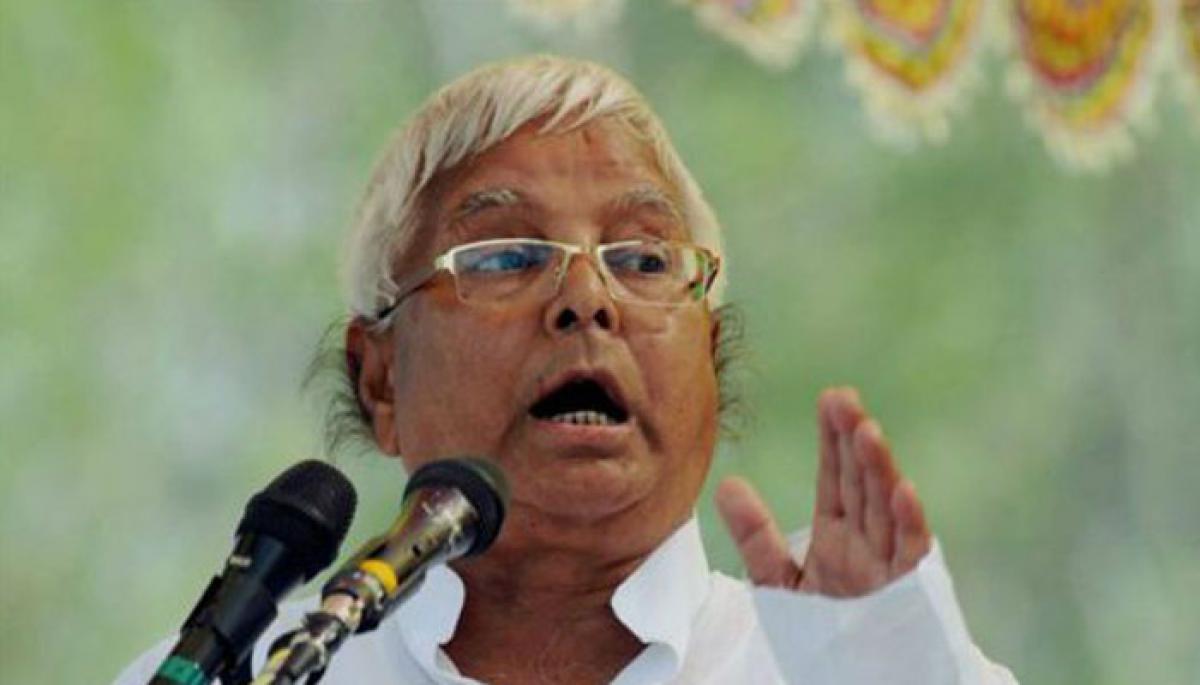Live
- Atul Subhash’s Suicide Sparks Outrage; Estranged Wife, Judge Accused of Harassment
- Malaria cases, deaths in India decline by 69pc between 2017-2023: WHO
- ED raids three places in Bengal in online forgery scam case
- Manchu Manoj Questioned by Police Amid Family Dispute
- Bengaluru: IMD Issues Yellow Alert Amid Upcoming Rainfall
- Manchu Vishnu Addresses Media, Clarifies Incident Involving Mohan Babu
- HPCL inks pact with Sea6 Energy to convert seaweed biomass into fuels
- Numaish 2025: Hyderabad’s Grand Exhibition Kicks Off in January – All You Need to Know
- There will be opportunities from every crisis, says CM Chandrababu at collectors' conference
- Women now own 20.5 pc of MSMEs in India, startups surge in tier 2 and 3 cities
Just In

x
Highlights
Like the world that swings between two extremes, mood of Indian (for that matter, any) voter fluctuates between Left, Right and sometimes Centre.

Like the world that swings between two extremes, mood of Indian (for that matter, any) voter fluctuates between Left, Right and sometimes Centre. However, these moods were created and escalated and finally converted into decisive mandate during elections based on situations prevailing at the given point of time.
To counter the kamandal politics, when VP Singh employed the mandal missile. Though VP Singh succumbed to the resultant mayhem that followed the clash of mandal and kamandal, the rule of Yadava clan was established in the Hindi heartland.
Though in UP, Mulayam had a formidable foe in the form of Mayawati, Laloo ruled with open fists for fifteen years. Yes, his rule is now being called Jungle Raj. There was no law and order and kidnapping had become a profitable business. Virtually there was no development during his rule. It doesn’t mean there was development during the previous four decades of Congress rule, but the fact remains that Mr Laloo Prasad Yadav never tried to change the economic situation of his people, who continued migration to greener pastures within India. Moreover, he empowered his clan so much so that other sections of the society have started they are now being castigated if he returns again.
Though his rule, albeit he administered a popular Government that was fully legitimate according to democratic norms, was continuously mired with controversies, never for once, he was regarded as an able Chief Minister. However, when he lost the Assembly he became the cabinet minister for railways.
His stint as railway minister had, in fact has exposed the hollowness of frenzy ridden Indian media. It might be a coincidence that Nitish Kumar, his successor as Chief Minister of Bihar was also his predecessor as Railway Minister.
Now, it is common knowledge that any administrative decisions would take time to reflect the change on ground. And, Laloo had basked in glory when credited for the success that was primarily the result of Nitishh’s efforts. In fact, IIM had went one step ahead and arranged a talk by Laloo to the students of premier organisation.
But, hard work pays. Nitish went on working at state level and migration from Bihar had not only stopped, but even reversed a little bit. However, as we know, Nitish had parted ways with BJP and stood exposed. Exposed by sudden halt and reversal of his Governance, when BJP was not a coalition partner. It remained a fact that crucial portfolios in the cabinet of Nitish were handled by BJP’s men and it was simply a collective effort between both parties. However, it is nature’s nature to oscillate from one end to the other and so the split that again pushed Bihar down.
“Hamammein sab nangehain”.
Nitish could never claim the moral high after the split. Had he resigned immediately after the Gujarat riots, he would have sounded right notes. But, splitting with BJP when Modi was on the verge of becoming the Prime Ministerial candidate had exposed his hypocrisy. And, after slamming Laloo for nearly two decades, befriending him again had raised doubts about his sincerity towards the development of the state. Coupled with the fact that the situation of Bihar had steadily declined after the split raised questions on his capability as an administrator; and BJP advertised this issue to denote that it was the BJP, who had provided a decent administration and not Nitish Kumar. And finally, the coronation and deposition of Majhi had dented his credibility in the carefully cultivated Mahadalit voters. At the best, Nitish could be remembered as Karna of Bihar’s local Mahabharata.
Meanwhile, BJP that found suddenly without an ally was caught in the internal politics that were regularly seen in Congress. The caste equations of Bihar prevented the rise of a single person as the chief of BJP and this forced them to depend on the central leadership, like in Congress. Moreover, the anti-incumbency factor against the Central Government, may also play a role, largely due to the fact that it was the central leadership that BJP is projecting in Bihar continuously.
Laloo, with rejuvenated energy was fighting probably, his last battle. Unlike BJP and Nitish, he has nothing to lose and so was firing on all cylinders. Whatever may be the result, Laloo remain a hero in Bihar for at least next five decades. This is not because of his corruption or his consecutive winning of elections earlier. He gave a voice to the weaker sections – yes, Yadavas were weaker in pre-Laloo regime. Even now, unlike in down south, up north is a more casteist one. It doesn’t mean there are no caste politics in south. They do exist, but not as widespread as in north.
Only achievement that Laloo could boast off and his clan will remember him for – was he gave a confidence to the backward classes that they also can form a Government, and are equal in the eyes of the constitution, as much as higher castes. This is critical, because without such confidence to all sections of society, development will remain only for the privileged classes making it incomplete. However, the situation has already changed in not only Bihar and if continue, caste politics will be detrimental to the overall progress of the society and so, Laloo, who was a necessity earlier had become a villain of circumstances entirely orchestrated by his own rule.
By Kannan

Next Story
More Stories
ADVERTISEMENT
© 2024 Hyderabad Media House Limited/The Hans India. All rights reserved. Powered by hocalwire.com







